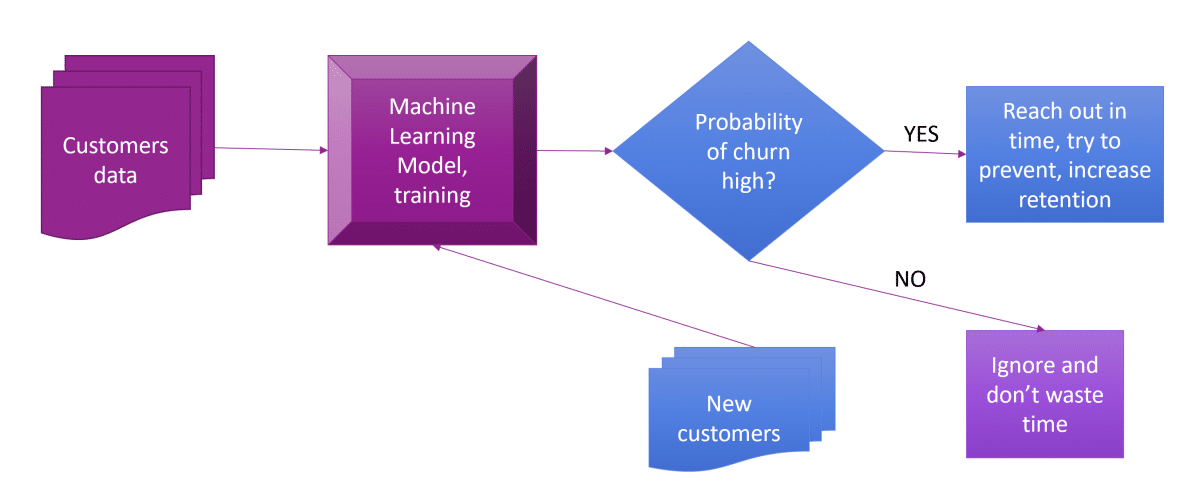Introduction
let's look at each concept and its definition with some real-world examples
Artificial Intelligence (AI): Artificial Intelligence (AI) refers to developing computer systems that can perform tasks that normally require human intelligence, such as learning, problem-solving, decision-making, and understanding natural language.
The main motive is to create an application that can perform its task without human interaction.

Example: An intuitive example of AI is a virtual personal assistant like Apple's Siri or Amazon's Alexa. These AI-powered assistants use natural language processing and machine learning algorithms to understand spoken commands and, provide responses or perform tasks. For instance, you can ask Siri to set an alarm for you, make a phone call, play music, or provide you with the weather forecast. The more you interact with these assistants, the more they learn about your preferences and habits, and the better they can anticipate your needs. This is just one example of how AI can make our lives easier and more convenient.
Machine learning (ML): Machine Learning is a subset of Artificial Intelligence that involves the use of algorithms and statistical models to enable computer systems to learn and improve from data without being explicitly programmed. It provides statistical tools to analyze, visualize, predict, and forecast the data.

Example: An intuitive example of machine learning is email filtering. Email providers like Gmail use machine learning algorithms to filter out spam emails from our inboxes. The algorithms learn from the user's past behavior, such as which emails were marked as spam or moved to the trash, to identify patterns and make predictions about which emails are likely to be unwanted. As more data is fed into the algorithm, it becomes more accurate at identifying and filtering out spam emails. In this example, the algorithm is "learning" from the data and improving its accuracy over time without the need for explicit programming. Machine learning is also used in other applications such as image recognition, voice recognition, and natural language processing.
Deep Learning (DL): Deep Learning is a subset of Machine Learning that involves the use of neural networks with multiple layers to enable computer systems to learn and make decisions from complex data inputs. To mimic the human brain, a secret sauce is introduced which is used by almost every new technology.



Example: An intuitive example of deep learning is image recognition. Deep learning algorithms can be trained on large datasets of images to identify objects or features within the images. For instance, a deep learning algorithm can be trained to recognize different breeds of dogs. The algorithm is fed thousands of images of dogs and "learns" the distinguishing features of each breed, such as the shape of the ears, the color of the fur, and the size of the body. Once the algorithm has been trained, it can be used to classify new images of dogs, even if it has never seen those specific images before. Deep learning algorithms are also used in other applications such as speech recognition, natural language processing, and autonomous vehicles.
Let's see one of my projects (shown only the last part if you want the whole project please visit here: Dog Breed Detector By Arpit Dubey)
Data Science (DS): Data Science is an interdisciplinary field that involves the extraction, analysis, and interpretation of data to gain insights and knowledge from complex and large datasets.

Example: An intuitive example of Data Science is predicting customer churn for a subscription-based service like Netflix. Data scientists can use statistical modeling and machine learning algorithms to analyze data on customer behavior, such as the number of hours watched, the frequency of logins, and the ratings given to different movies or TV shows. By identifying patterns in the data, data scientists can predict which customers are likely to cancel their subscriptions shortly. This allows companies like Netflix to take preemptive measures to retain their customers, such as offering personalized recommendations or promotions. Data science is also used in other applications such as fraud detection, social media analytics, and medical research.

Difference Between AL, ML, DL, and DS
The key differences between Artificial Intelligence (AI), Machine Learning (ML), Deep Learning (DL), and Data Science (DS) in points:
Artificial Intelligence (AI):
- AI involves creating intelligent machines that can perform tasks that typically require human intelligence.
- It encompasses a wide range of subfields, including robotics, natural language processing, and computer vision.
- AI systems can be rule-based, expert-based, or machine learning-based.
Machine Learning (ML):
- ML is a subset of AI that focuses on developing algorithms that enable machines to learn from data and make predictions or decisions.
- It involves the use of statistical techniques to enable machines to improve their performance on a specific task over time.
- There are three main types of ML: supervised learning, unsupervised learning, and reinforcement learning.
Deep Learning (DL):
- DL is a subset of ML that uses neural networks to enable machines to learn from unstructured data such as images, speech, and text.
- It involves the use of multiple layers of neural networks to extract features from the data and make accurate predictions or decisions.
- DL is particularly useful in applications such as image and speech recognition.
Data Science (DS):
- DS is a multidisciplinary field that involves using statistical and computational methods to extract insights and knowledge from data.
- It encompasses a wide range of subfields, including data analysis, data mining, and predictive analytics.
- DS involves the use of tools such as Python, R, and SQL to clean, preprocess, and analyze data.
Conclusion and References:
In conclusion, Artificial Intelligence (AI), Machine Learning (ML), Deep Learning (DL), and Data Science (DS) are closely related but distinct fields of study. AI is a broad field that involves creating intelligent machines that can perform tasks that typically require human intelligence. ML is a subset of AI that focuses on developing algorithms that enable machines to learn from data and make predictions or decisions. DL is a subset of ML that uses neural networks to enable machines to learn from unstructured data such as images, speech, and text. DS is a multidisciplinary field that involves using statistical and computational methods to extract insights and knowledge from data.
Each of these fields is experiencing rapid growth and is transforming the way we live and work. AI is being used to automate tasks and create new products and services, while ML and DL are being used to improve the accuracy and efficiency of many applications, including natural language processing, image recognition, and speech recognition. Data Science is being used to extract insights from big data and make informed decisions.
It is essential to understand the differences between these fields and how they can be applied to various domains to make the most of their potential. While there is some overlap between AI, ML, DL, and DS, each has its unique strengths and limitations, and understanding them can help in choosing the right approach for a given problem. Overall, these fields offer exciting opportunities for innovation and progress in various industries and fields.





Blog liked successfully
Post Your Comment
Rahul Shukla
Thanks for one's marvelous posting! I definitely enjoyeed readxing it, you could be a great author.I will make sure to bookmark your blog and will come back someday. I want to enourage you to ultimately continue your great writing, have a nice morning! http://Boyarka-Inform.com